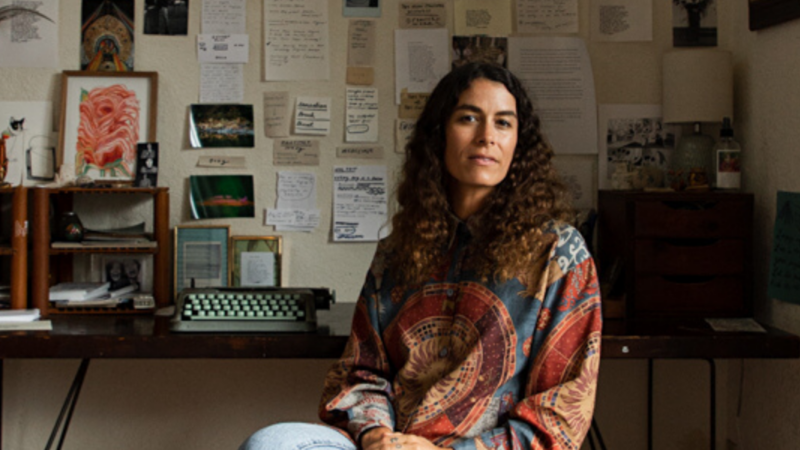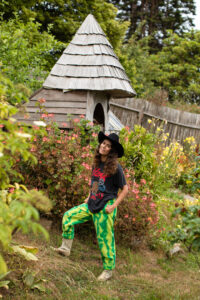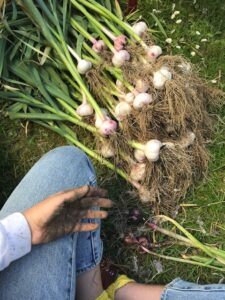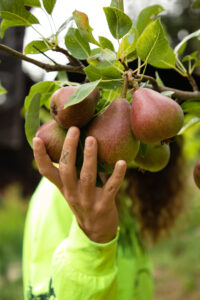-
E107: Becoming Okay Inside
Michael Singer — August 28, 2025
The fundamental spiritual question is not “How do I be okay?” It is “Why am I not okay?” Our ...
-
Andrew Holecek: What Reincarnates? | Part 2
Andrew Holecek — August 26, 2025
Join Tami Simon and Andrew Holecek for the second half of their exploration of reincarnation. Here,...
-
Honey Tasting Meditation: Build Your Relationship with Sweetness
There is a saying that goes “hurt people hurt people.” I believe this to be true. We have been...
Written by:
Amy Burtaine, Michelle Cassandra Johnson
-
Many Voices, One Journey
The Sounds True Blog
Insights, reflections, and practices from Sounds True teachers, authors, staff, and more. Have a look—to find some inspiration and wisdom for uplifting your day.
Standing Together, and Stepping Up
Written By:
Tami Simon -
The Michael Singer Podcast
Your Highest Intention: Self-Realization
Michael Singer discusses intention—"perhaps the deepest thing we can talk about"—and the path to self-realization.
This Week:
Andrew Holecek: What Reincarnates? | Part 2 -
Many Voices, One Journey
The Sounds True Blog
Insights, reflections, and practices from Sounds True teachers, authors, staff, and more. Have a look—to find some inspiration and wisdom for uplifting your day.
Take Your Inner Child on Playdates
Written By:
Megan Sherer
600 Podcasts and Counting...
Subscribe to Insights at the Edge to hear all of Tami's interviews (transcripts available, too!), featuring Eckhart Tolle, Caroline Myss, Tara Brach, Jack Kornfield, Adyashanti, and many more.
Most Recent
Richard Strozzi Heckler: Somatic Transformation
Richard Strozzi-Heckler is an executive coach, author, and the founder of the Strozzi Institute. His published works include The Anatomy of Change and The Leadership Dojo. In this episode of Insights at the Edge, Tami Simon speaks with Richard about the somatic training that he has taught for more than 20 years. Richard explains the process of somatics and the many benefits of tuning into the messages of the body. Tami and Richard talk about the importance of breath awareness and how we can change our relationship to breathing. They discuss the relationship between somatic awareness and good leadership, as well as how to overcome resistance to unpleasant sensations. Finally, Richard and Tami consider the process of somatic change and the sometimes difficult passages that it requires. (71 minutes)
Adreanna Limbach: Tea and Cake with Demons
Adreanna Limbach is a personal coach and the lead meditation teacher at Mindful Meditation Studios in New York City. With Sounds True, she has published Tea and Cake with Demons: A Buddhist Guide to Feeling Worthy. In this episode of Insights at the Edge, Tami Simon speaks with Adreanna about contemplative practices that can open anyone to sitting down and becoming more familiar with their own difficult, painful feelings. Adreanna explains how these same practices helped her come to terms with panic attacks and become more resilient to extreme bursts of emotion. Tami and Adreanna discuss what it means to be “worthy” and why challenges are actually invitations to practice. Finally, they talk about the Four Noble Truths and how they might be interpreted in the modern era. (67 minutes)
Lama Rod Owens: Finding Our Way Home Through the Body
Lama Rod Owens is an author, activist, and fully trained lama of the Vajrayana tradition of Tibetan Buddhism. With Sounds True, he is presenting during the upcoming Wisdom of the Body Summit, an online event devoted to tuning into the natural intuition and awareness of our physical forms. In this episode of Insights at the Edge, Tami Simon speaks with Lama Rod about the basics of Vajrayana and how its practices can be applied to modern life. Tami asks Lama Rod how his identity as an African-American, queer man informs his practice and teachings. In turn, Lama Rod comments on how spiritual teachings should meet people where they actually live and those parts of the Tantric tradition that he had to leave behind. Finally, Lama Rod explains how Vajrayana brings you into greater harmony with the body, as well as why love and anger aren’t the polar opposites you might assume.(63 minutes)
Customer Favorites
Meet the Author of . . . Every Day Is a Poem
The Author
Jacqueline Suskin has composed over forty thousand poems with her ongoing improvisational writing project, Poem Store. She is the author of six books, including Help in the Dark Season. Her work has been featured in the New York Times, the Atlantic, and Yes! magazine. She lives in Northern California. For more, see jacquelinesuskin.com.
The Book
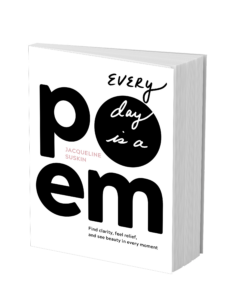
How do we deal with the heaviness of everyday living? When we are surrounded by uncertainty, distrust, and destruction, how do we sift through the chaos and enjoy being alive?
In Every Day Is a Poem, Jacqueline Suskin aims to answer these questions by using poetry as a tool for finding clarity and feeling relief. With provocative questions, writing practices, and mindset exercises, this celebrated poet shows you how to focus your senses, cultivate curiosity, and create your own document of the world’s beauty. Emphasizing that the personal is inextricable from the creative, Suskin offers specific instructions on how to make a map of your past and engage with your pain to write a healing poem.
Show us a day in your life.
I’m currently the Artist in Residence at Folklife Farm, where I spend my days writing, reading, teaching online and working in the garden.
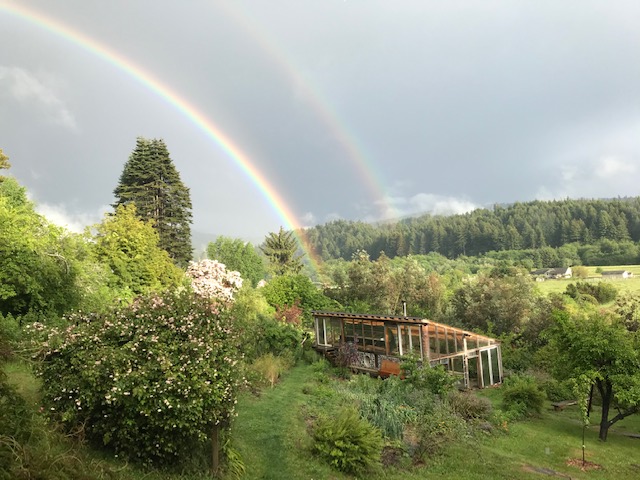
I wake up and take care of my body, dance, stretch, and harvest something for breakfast.
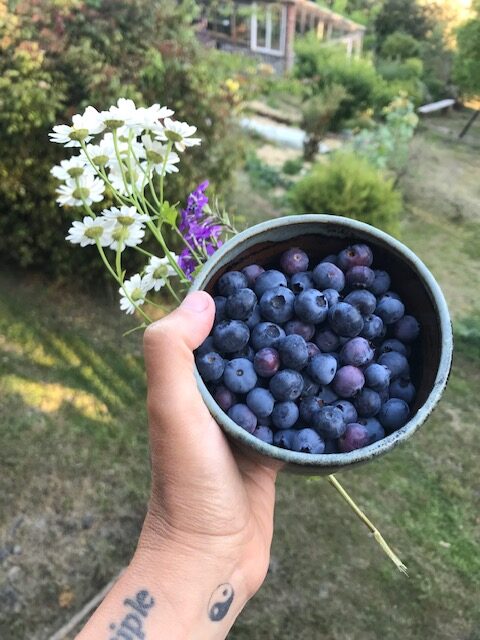
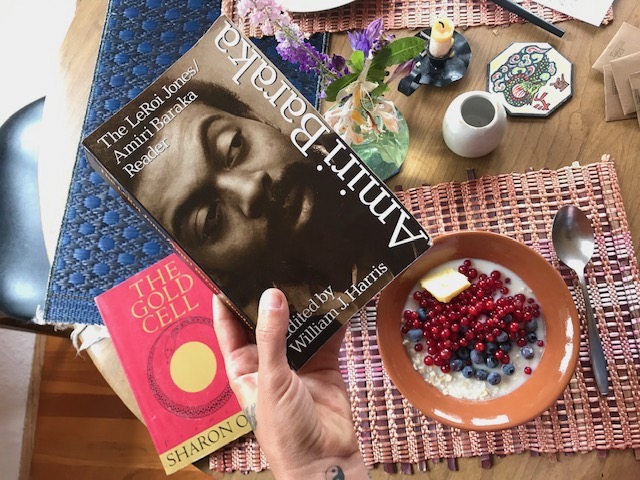
Then I usually work at my desk until late afternoon when I find my way back to the garden for more harvesting and chores.
When I’m working on a book, I’ll wake up around 4 am to write before anyone else is awake. I know that whenever I wake up in the dark with an idea, it’s my job as a poet to turn the light on and write it down.
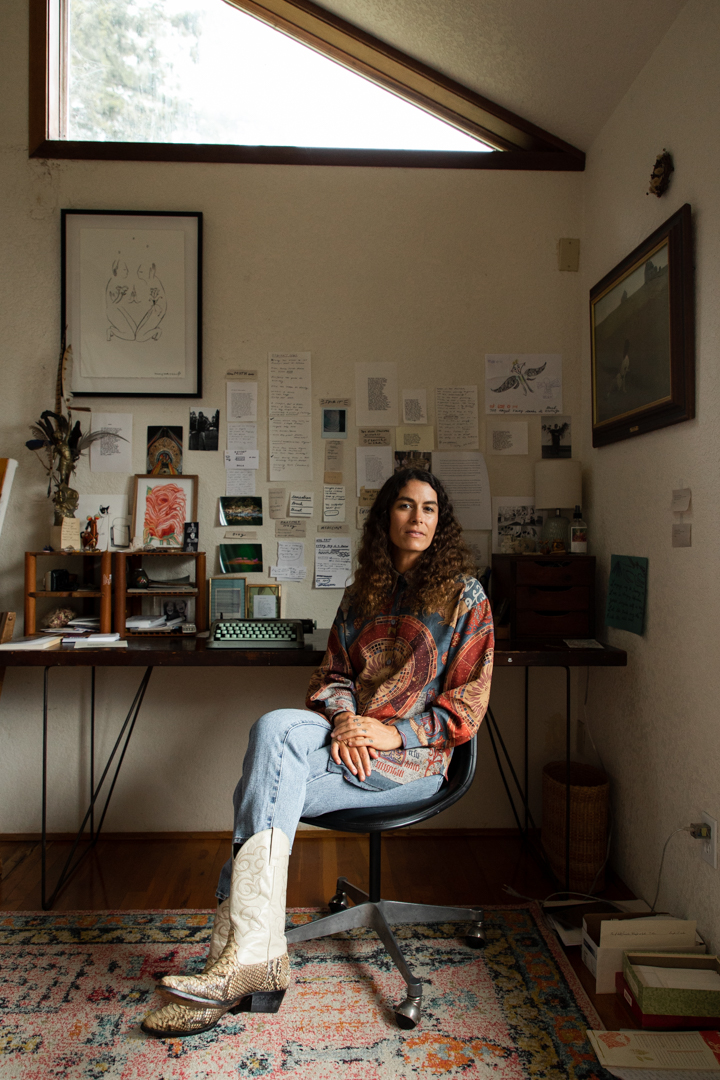
With this schedule, my days are fluid; and although I make showing up at my desk a main priority, I never forget that it’s summer and there are rivers to swim in, flowers to smell, and berries to pick.
Are you learning any new tricks or skills during this time (COVID)? What’s been hardest for you? What do you miss the most? Has your book taken on a new meaning in the world’s current circumstances? Is there anything you would have included in your book if you were writing it now?
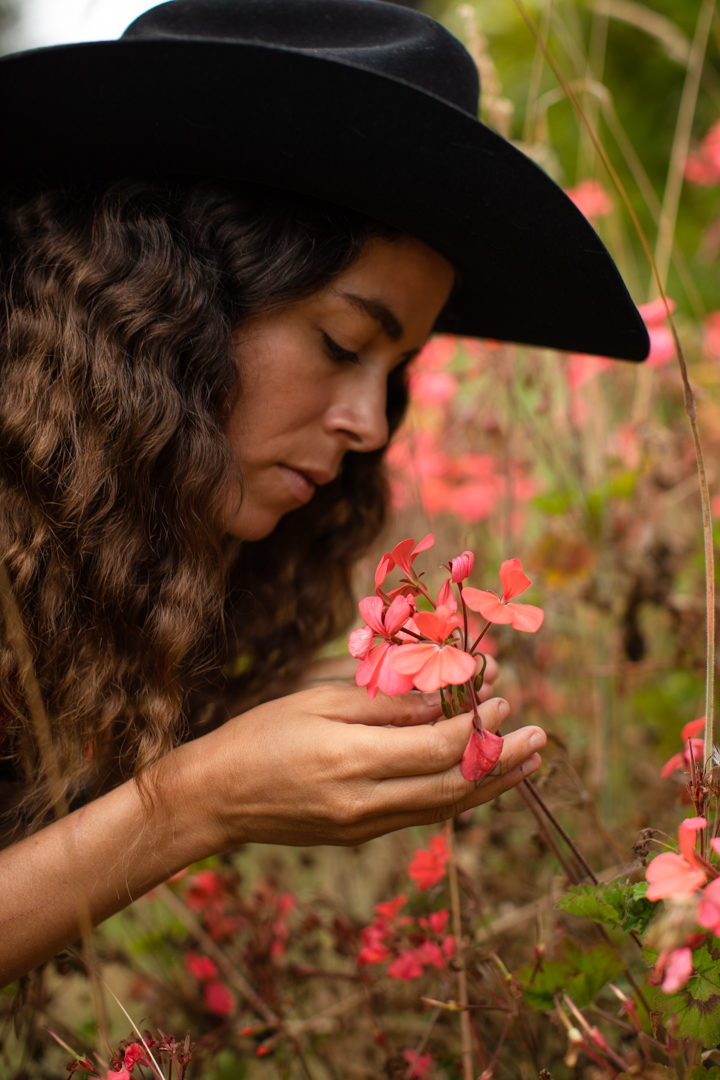
During quarantine, I had to shut down the retreat program I was running at Folk Llife Farm. This was a sad shift, as we had folks signed up to stay for months in advance. Now that I’m not spending my time hosting or interacting with my local community in person, I’m engaging with my online community in a larger capacity. I miss sitting in front of my audience, writing for people after looking them in the eye, and I really miss browsing bookstores. I miss hugging my friends, having teatime and long conversations, and I miss going on tour. But I can’t complain. Poetry has its place in the world now more than ever. I’m here to translate the communal mood, to voice our collective pain, and find the beauty in all of it. My book will help others do this as well. And if there’s one thing COVID has taught me, it’s that we all need an outlet for our emotions, especially when we feel unseen and disconnected. Poetry is this outlet and we can still share it even if we can’t be with one another in person.
What is something about you that doesn’t make it into your author bio?
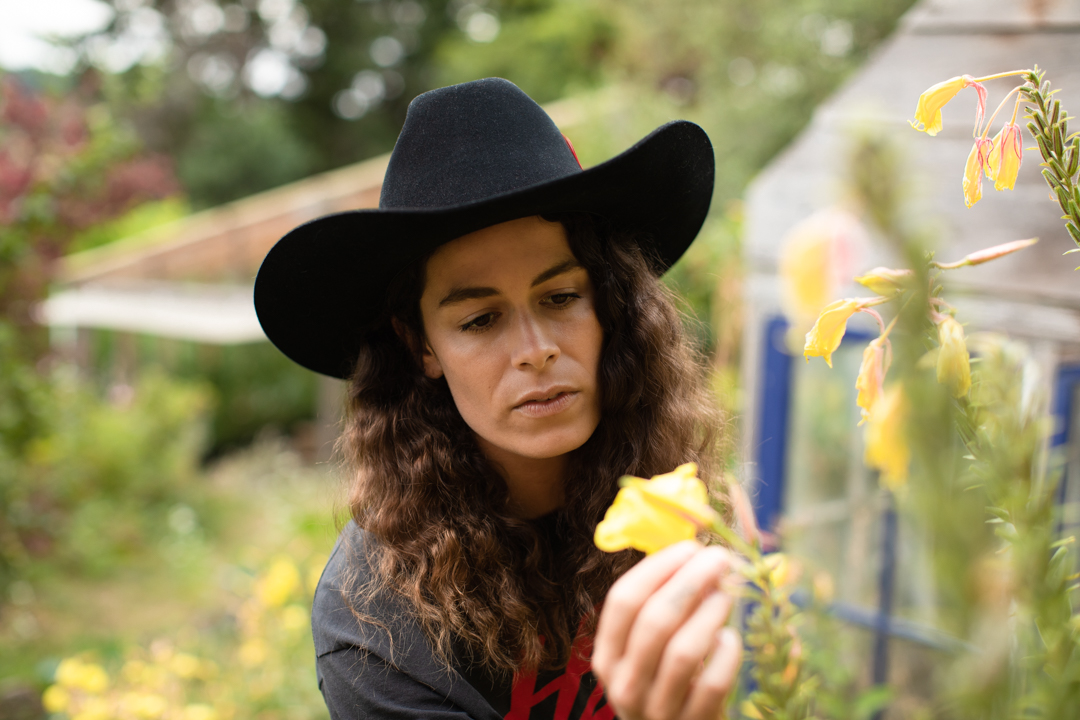
I’m an ecstatic earth worshiper. Everything I do, every word I write, is attached to the idea that when my readers discover healing through my words, when they transform and become better by way of my work, they’ll in turn treat themselves, each other, and the earth better. This planet is a perfect gift and humans have ruined so much of it. Through my efforts as a poet, I hope to pay tribute to the earth and offer up ways for humans to change their relationship to our one and only home.
Photos of Jacqueline Suskin by James Adam Taylor
Photos around Folklife Farm by Jacqueline Suskin
Learn More

Sounds True | Amazon | Barnes & Noble | Indiebound | Bookshop
Sandra Ingerman and Marie Manuchehri: What are Spirit ...
In this special edition of Insights at the Edge, Tami Simon speaks with Marie Manuchehri and Sandra Ingerman about their experiences with spirit guides and how we might meet these helpful forces ourselves at any moment in our lives. Sandra and Marie share their perspectives on how to access information that we can trust, communication through metaphor, and how they work with spirit guides for healing in their professional practices. Sandra and Marie also share advice and recommendations for those curious about connecting with their own spirit guides. (61 minutes)
Loch Kelly: Pointers to Open-Hearted Awareness, Part 1
Loch Kelly is a meditation teacher, author, and founder of the Open-Hearted Awareness Institute. With Sounds True, Loch has just published the book and a companion audio series Shift into Freedom: The Science and Practice of Open-Hearted Awareness. In this episode of Insights at the Edge, Loch and Tami Simon speak on the discovery of “awake awareness” and how to get in touch with a state that is already present in all of us. They also talk about the difference between effortful and effortless mindfulness practice, as well as methods of “unhooking” from the relentless flow of thought. Finally, Tami and Loch discuss stabilizing one’s mindfulness practice and living from awake awareness in every moment. (64 minutes)

